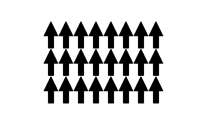
Photo from wikipedia
Abstract We report powder diffraction data measured on SrRuO3 to pressures of 88 GPa at ambient temperature. The perovskite structure is found to persist up to the highest pressure measured, but the… Click to show full abstract
Abstract We report powder diffraction data measured on SrRuO3 to pressures of 88 GPa at ambient temperature. The perovskite structure is found to persist up to the highest pressure measured, but the system undergoes a continuous transition consistent with a 2nd order phase transition to the monoclinic space group P21/n near 25 GPa. Fitting the P–V data with the 2nd order Birch-Murnaghan EoS yielded a bulk modulus of K0 = 177.4(10) GPa. Four high-pressure low-temperature experiments have been performed to resolve discrepancies in previous studies. SrRuO3 cooled to 6 K at near-constant pressures of 10 GPa and 40 GPa showed no volume collapse during cooling. A compression experiment conducted at 6 K up to 65 GPa, showed a structural transition to the P21/n space group at 28 GPa, and fitting the P–V data with a 3rd order Birch-Murnaghan EoS yielded a bulk modulus of K0 = 154(6) GPa. The experimental data have been compared to DFT calculations. In good agreement with experiments, calculations including ferromagnetic interactions show a structural transition to the P21/n space group at 30–40 GPa. Surprisingly, calculations show that the SrRuO3 returns to Pbnm symmetry above 90 GPa. The magnetic moment on Ru was predicted to disappear above 70 GPa and at the same time the RuO6 octahedra was found to become distorted. The present studies provide a solid ground for further studies of phase relations of SrRuO3 and related perovskites.
Journal Title: Journal of Solid State Chemistry
Year Published: 2020
Link to full text (if available)
Share on Social Media: Sign Up to like & get
recommendations!